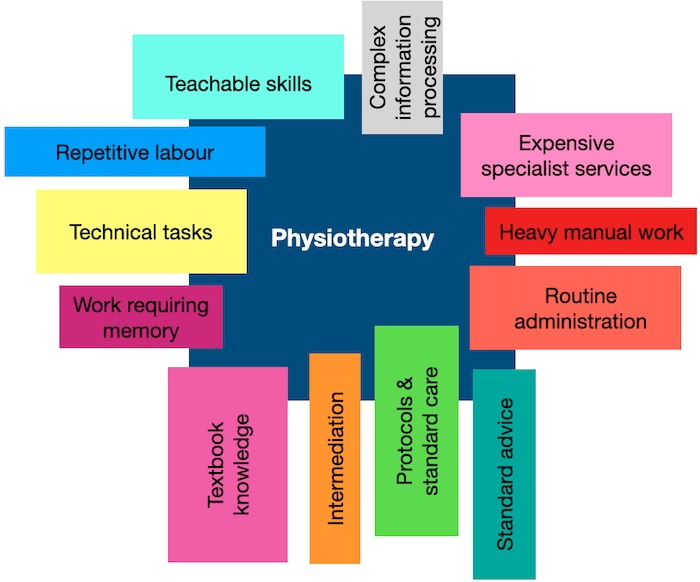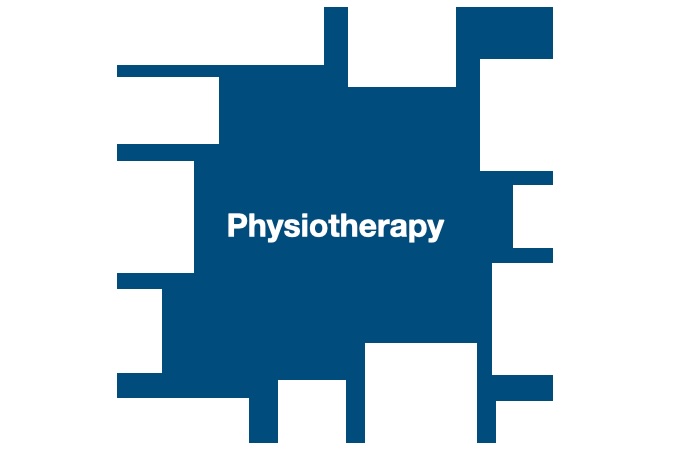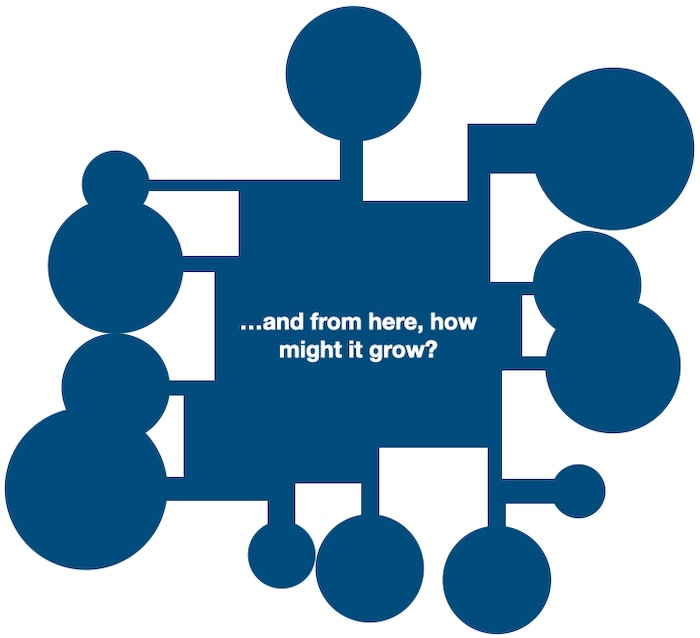85 Hollowing out physiotherapy activity
In the section on The future of empathy and care I talked about the belief amongst some healthcare professionals that they would be immune to a lot of the changes now being brought by AI and robotics because their work was fundamentally about care, and humans are so much better at caring than machines. Lots of people believe this. Even Richard and Daniel Susskind have suggested that there will always be a need for ’empathy workers’. Some now believe this is a myth though, and the arguments in The future of empathy and care section try to explain why.
If you follow the arguments through, even human care work is vulnerable to rapid technological development (a force made even more powerful now with ChatGPT and other large language models).
So, if even human empathy and care work can’t be protected from digital disruption, what remains for a profession invented in the late C19 and designed for a very different time?
This activity, called hollowing out, asks that question.
You can do this exercise on your own, but it works best when it’s done with teams of colleagues or students.
Hollowing out activity – Part 1
1. Start with a clean sheet of paper.
2. Using a pencil (you’ll see why shortly), draw a large rectangle in the centre of the page. This is going to represent the profession as it exists today.
3. Now think about anything in your day-to-day work that can be taught in a standardised, repeatable fashion. Apportion a block within the larger rectangle to represent how much of your work this kind of knowledge takes up. If you work in a highly regulated, repetitive or standardised environment the square will be bigger than if you’re free to do whatever you want.
4. Now repeat the exercise for all 12 of the processes listed in this table. Draw a square for each one and add it to the rectangle.
| Process | Examples in your profession |
| Technological dependence | Where workers are so reliant on technology that a task might not be completed if the technology was not available |
| Routinisation | Where the work has been classed as routine and ideally done by someone lower paid or a automated/computerised process |
| Disintermediation | Where the work of mediating between people has been passed to other people/processes. |
| Decomposition | Where a task has been broken down and distributed among other people/systems |
| Labour arbitrage | Where work is outsourced, often to people in other regions/countries (call centres, for example) |
| Standardisation | Where a task that was once considered complex or specialised has been reduced to a set number of tasks or procedures so that it’s easier for less expensive workers to perform |
| Para-professionalisation | Where regulated and often unregulated colleagues pick up work that was once yours (vertical encroachment) |
| Delegation | Where a group willingly delegates work to lesser status workers to relieve their burden |
| Specialisation | Where a group leaves ‘old’ work behind to push for higher status work |
| Automation | Where standard processes are computerised, standardised, or otherwise automated and removed from professional role descriptions |
| Globalisation | Where services are delivered regardless of location |
| Disenchantment | Where ‘mystical’ aspects of the profession (that could not easily be taught) are demystified and made instrumental, mechanistic, and repeatable |
You should end up with a picture looking something like this:

5. Now take a rubber and rub this square out of the larger rectangle, as if someone has bitten the piece off, which will give you a shape like this:

The assumption here is that soon all of the things you allocated boxes to will be taken from physiotherapy and given to people or machines that are much cheaper to train and employ than we are.
Hollowing out activity – Part 2
Now, it would be very easy to become despondent in the face of such destruction. It makes us ask what’s left of physiotherapy if all these things are removed.
But look at this another way; if so much of physiotherapy is prescription, automated, repetitive and mundane, surely such work should be given to people and machines that are cheaper to train and employ than we are!
The question is, what’s the real value of physiotherapy. If it’s not in routine and repetitive tasks, what is it?
This is what now makes up the blue chewed up square.
Take your time and think about what remains in the wreckage you’ve done to the profession? What’s lies at the heart of the profession that can form a base for a new kind of practice?
Perhaps follow a couple of the twiggy branches coming out of the heart of the profession and see if things might bud from there, like this;

Only if we do an exercise like this as individual professionals, as teams and as a physiotherapy community are we likely to find a new path for the profession in the face of so much post-professional change.

